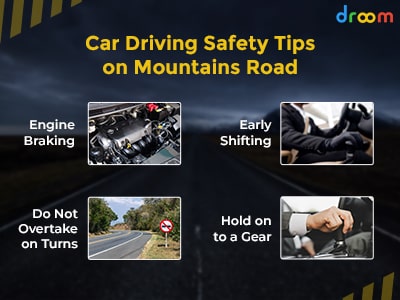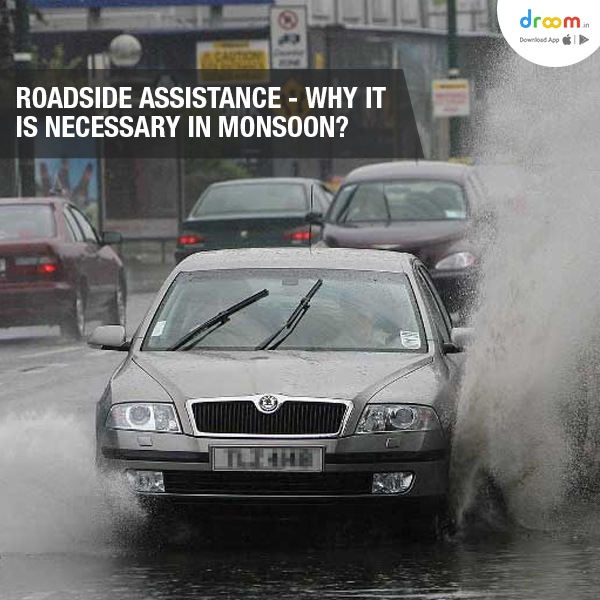If you ask around your family members or friends about at least 5 traffic rules in India or 5 traffic signs, chances are that you might meet with blank stares. Though it is expected of vehicle owners, driving on road, to know about different traffic signs and rules, the reality is that not many pay any heed to their significance or meaning. So much so that people carry on with their journey without noticing traffic signs on roads.
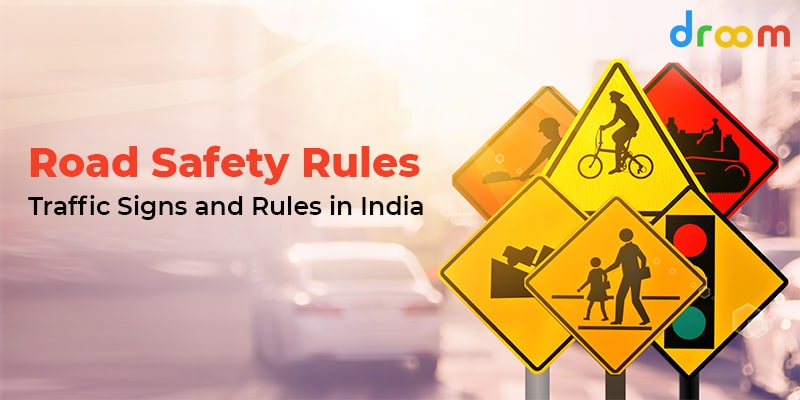
According to a report published in Statista, “In a country with the third largest road network in the world, the total number of vehicles in the fiscal year 2019 stood at 295.8 million. Road travel seemed to be the preferred choice in India with over 60 percent of the population who used personal or shared vehicles for commute.”
Even the color-coded milestones on the road have a specific meaning, signifying different roads for the benefit of the passerby. But do you know about them? With millions of vehicles plying on Indian roads, it becomes incumbent, not only for the authorities to spread awareness but for individuals to be aware of road safety rules and various traffic signs on the road.
In this blog, we are going to cover different traffic rules of the road which you, as a vehicle owner, must be aware. We have divided it into four parts:
- Traffic Signs
- Road Markings
- Color-coded milestones
- Hand Signals
- Stay Alert, Stay Safe with Traffic Signs
There are many traffic light rule and signs one encounters while travelling by national highways, state highways, and rural areas of the country. While many of these signs are pretty much indicative of their meaning, and you, as a driver, must follow road signs for a safe journey.
How many times have we seen people pleading with the traffic police to let them go as they missed the No U-Turn sign or did not follow the mentioned speed limit? Though regarded as a minor offence, these at times lead to major hassle on road. Something as simple as driving in a lane, for example, can make Indian roads a much better place, however, it depends on individual awareness and respect for the traffic rules.
Traffic signs on Indian roads
Road safety signs have been classified into three categories:
- Mandatory Signs
- Cautionary signs
- Informatory signs
Mandatory Signs
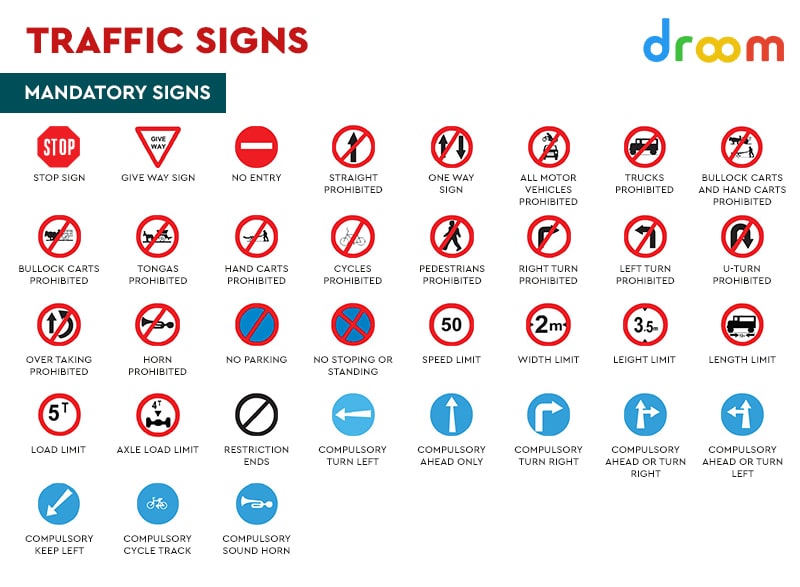
Mandatory signs provide necessary guidance on roads. Be it steep turns, bumps on road, speed limit, one way signs, or No Overtaking signs, there are plenty of Mandatory traffic signs which help you navigate safely through roads.
Let us take the most important and visible set of traffic signs which can make your overall journey on Indian roads a comfortable one. These are:
- No Entry:

If you spot any red circle with a white horizontal line in between, it is better to not enter the respective road. Passing through roads with No Entry Road sign not only attracts penalties but also causes trouble for others.
- Straight Prohibited or No Entry:
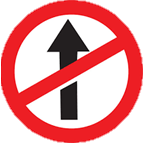
As is the case with No Entry signs, Straight Prohibited or No Entry signage specify the direction of the traffic not allowed to proceed ahead on a particular road. If the arrow points towards your direction, do not enter the road as you can find the alternative route on GPS or ask a passerby for guidance.
- One Way Sign:
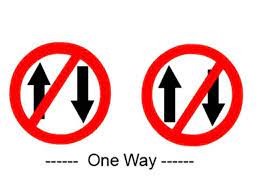
It is easy to confuse between One Way sign. Irrespective of the direction, both are represented by two arrows in a circular format. Pay attention to the arrow with a red line over it as it signified the direction in which you are not supposed to travel.
- Vehicle prohibited in both directions:
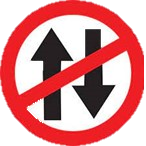
Do not enter any road which has the below-mentioned signage. You will incur a penalty and be reprimanded by the traffic police officials.
- No Stopping or Standing:
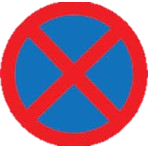
This sign is installed at high-sensitive areas such as roads leading to government offices and even around residential areas.
Check out the elaborated list of Mandatory Road signs list signs. As you can see, these are indicative of their meaning. Be alert while driving to ensure that you do not miss any of these.
Mandatory road traffic signs are installed in a circular format across roads and highways.
Cautionary signs
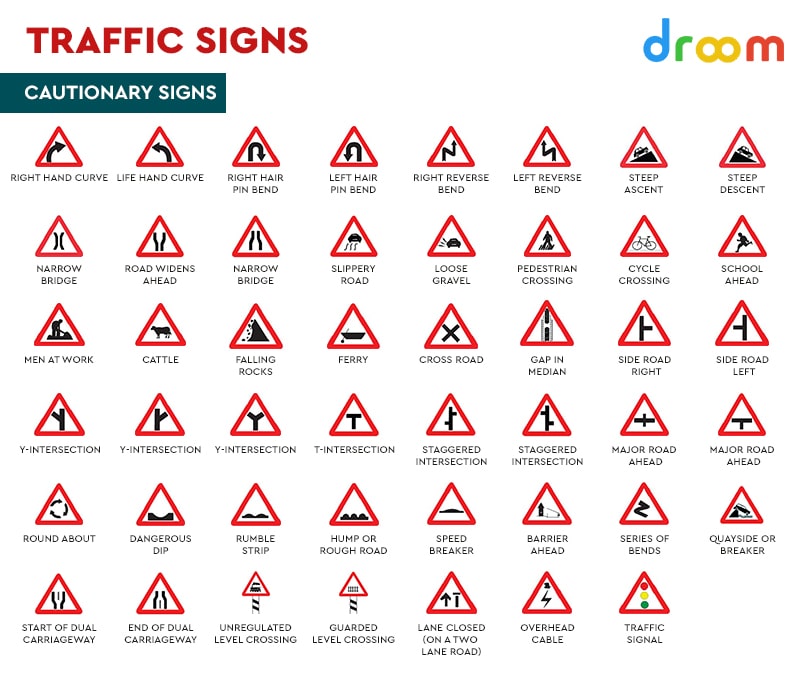
These signs are displayed in a triangular format to warn people about the road ahead. As the name suggests, once you spot a traffic sign in a triangular format, it is better to make necessary adjustments to drive through without any hassles.
Cautionary driving signs include directional signs which alert the driver about the steep right/left turn, Steep Ascent/Descent, Slippery Road, Dangerous Dip, Loose gravel, School ahead, and many more.
Informatory signs
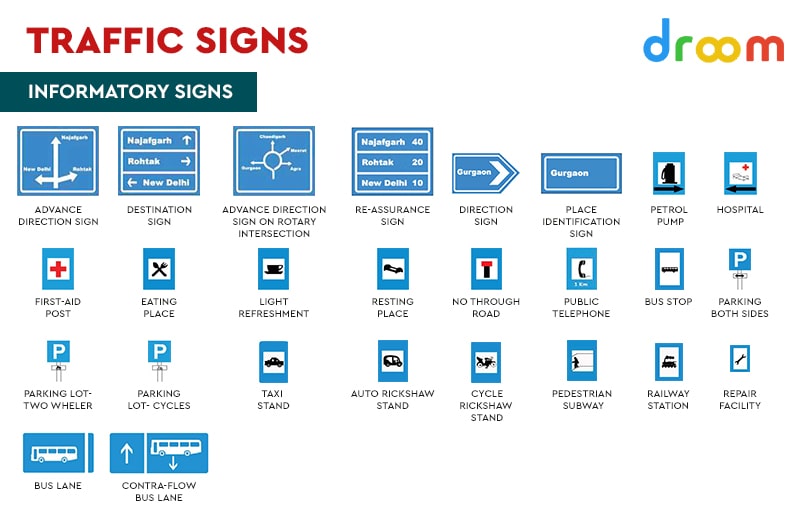
Informatory traffic signs with name are depicted in a square or rectangular format. For any information regarding Hospital, Eating Place, Petrol Pump, Bus Stop, Repair Facility, etc., keep an eye on square/rectangular signs installed on roads.
Follow The Road Discipline with Road Markings
Road markings painted on the road guide the traffic of the on-road discipline. At times, in haste, we tend to ignore these markings, unaware of their meaning. Ignoring Road markings can prove fatal, and it is better to be mindful of these for a safe journey.
Here are different road markings:
Single Broken Line

The Single Broken Line in the middle of the road divides the two streams of traffic. Though overtaking is permissible on it, it is advised to proceed ahead with caution if you want to overtake the vehicle in front of you. The length of the Single Broken Line is greater than the ones in the respective halves of the opposing streams.
Single Solid Line

The Single Solid Line, in the middle of the road, indicates that the vehicles should not overtake and should not cross to the other stream of the road. Only in dire situations, such as a parked vehicle on road, can you opt to cross over to the other stream to move ahead onto your path.
Double Solid Line

Double Solid Line as the Single Solid Line indicates that you should not cross over to the other side of the road.
Combination of broken and solid line
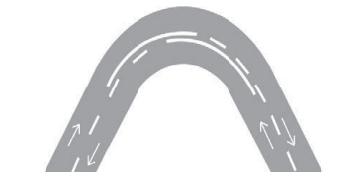
Though tricky in design, a combination of Broken & Solid Line is usually painted on the roads with low visibility to guide the traffic. If you are moving alongside the path of the broken line you can overtake with caution. However, refrain from overtaking if you are moving along the solid lines.
Stop Line

If you see “STOP” inscribed on the road/intersection, it is better to proceed ahead with caution. The traffic moving on the main road gets priority to move before you can take a turn to proceed ahead.
Give Way Line

Give Way Line is painted on the road as a caution for the drivers to let the incoming traffic from the main road take a turn before you.
Zebra Crossing

Zebra crossing sign is painted on the road for pedestrian safety. Do not stop over the Zebra lines rather stop your vehicle before it.
Bicycle Lane
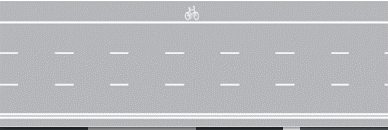
Bicycle lanes, as the name suggests, are exclusively for people traveling by bicycle. Motor vehicles are not allowed to pass through these and might incur a penalty if caught.
Find Your Way with The Color-Coded Milestones
Milestones do more than notify people of the distance. Every milestone is color-coded with different colors. It would not be of any surprise if you find people unaware of what each color means.
Here are the different color-coded milestone and their meaning:
- Yellow & White: You will find these milestones specifically on the national highways.
- Green & White: Every milestone installed on the state highways are painted with Green & White color.
- Blue/Black & White: Milestones on the city and district roads are painted with Blue and Black along with White color.
- Orange & White: Milestones in rural areas are painted with Orange & White colors.
There are times when you are traveling to an unknown place. With the help of these milestones, you can track the road you are traveling on and accordingly plan or find your way. Especially in dire need, when your phone is off, and you cannot find your way to the state highways or are passing through rural areas, these milestones can help you find your way.
Travel Smart with Hand Signals
Yet another basic traffic rules and discipline which not many people adhere to, Hand signals prove be lot effective to allow vehicles pass through or navigate on the roads. The thing to note here is that for a left/right turn, you should always use indicator lights before you take a turn in the respective direction. At times, if the indicator lights are not working, these hand signals prove to be lot more than useful.
Check out different Hand Signals:
- Left turn
- Right Turn
- Stop
- Slow Down
- Overtake
One hand signal, though effective, which should not be used, is showing your palm to cross the road. It is better to follow the traffic light and cross the road using Zebra crossing.
Indian Road Congress, with the incorporation of Section 116 of the Indian Motor Vehicle Act, 1988, mandates the use of signs along with traffic rules and regulations. Any failure to abide by these can incur a penalty as pre-determined by the laws.
As highlighted in the report published on Statista, “The number of road accidents across India amounted to around 449 thousand in 2019. Each year, about three to five percent of the GDP of the country was invested in road accidents. About 70 percent of accidents involved young Indians. The country has about one percent of the global vehicle population, but it accounted for six percent of the world’s road traffic accidents.”
It is for the on-road safety of the people that traffic authorities mandate its adherence for a smooth passage of the traffic. Now that you have read and know about different Signs, Road Marking, Milestones, and Hand Signals, go easy and follow safety rules on road to ensure your safety and your loved ones.
Droom is an automobile e-commerce platform offering a 21st-century automotive buying experience online with its four value pillars including trust, selection, low price, and convenience second to none. It offers 250k+ vehicles online in 1,100 cities — both used and new. Droom deals in buying and selling cars, 2-wheelers, and other vehicles too. It is an AI and data science-driven platform designed with the best ecosystem tools. Here, we have a team of auto-experts and auto enthusiasts who are dedicated to covering every sphere of the auto industry by simplifying the procedure of buying and selling with Unified Droom Experience. To know more, click here.






